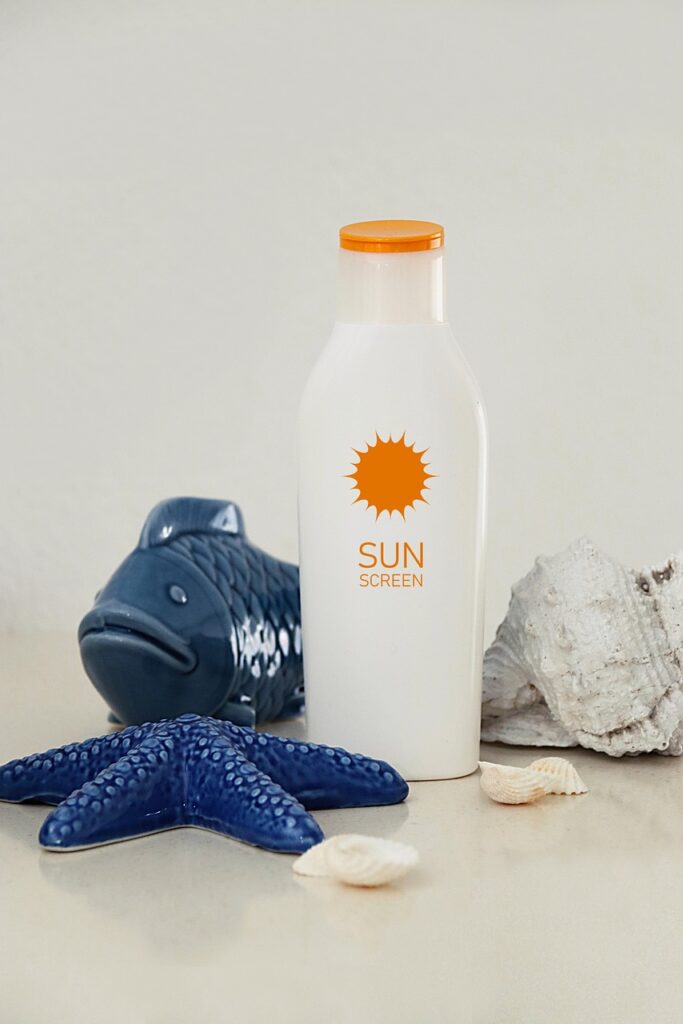In the realm of skincare, few acronyms are as ubiquitous as SPF. Yet, amidst the myriad of products and recommendations, understanding what SPF truly means and its significance can be daunting. Fear not, for in this comprehensive guide, we’ll unravel the mysteries of the Sun Protection Factor (SPF), empowering you to make informed decisions about protecting your skin from the sun’s harmful rays.

Understanding SPF:
SPF, or Sun Protection Factor, is a measure of a sunscreen’s ability to protect your skin from the sun’s ultraviolet (UV) rays, primarily UVA and UVB. Contrary to common misconception, SPF doesn’t indicate sun exposure but rather the degree of protection it offers against sunburn.
How SPF Works:
SPF works by multiplying the amount of time it takes for your skin to burn without sunscreen by the SPF number. For instance, if your skin typically burns after 10 minutes of sun exposure without protection, applying sunscreen with SPF 30 theoretically extends that time to 300 minutes (10 minutes x 30 SPF). However, this calculation is based on ideal conditions and may vary depending on factors like sweating, swimming, and proper application.

Significance of SPF:
The significance of SPF lies in its ability to shield your skin from the harmful effects of UV radiation, which include sunburn, premature aging, and an increased risk of skin cancer. Using sunscreen with an adequate SPF level is crucial for maintaining healthy, youthful-looking skin and reducing the risk of sun damage.
Choosing the Right SPF:
When selecting a sunscreen, consider factors such as your skin type, the intensity of sun exposure, and any specific skin concerns. Dermatologists generally recommend using a broad-spectrum sunscreen with an SPF of at least 30 for daily protection. However, individuals with fair or sensitive skin may benefit from higher SPF levels or additional sun-protective measures.
Applying SPF:

Proper application of sunscreen is key to maximizing its effectiveness. Apply sunscreen generously to all exposed skin areas at least 15 minutes before sun exposure. Reapply every two hours, or more frequently if swimming, sweating, or towel drying. Don’t forget to cover often overlooked areas like the ears, lips, and tops of feet.

Debunking SPF Myths:
Myth: The higher the SPF, the longer you can stay in the sun. Reality: SPF primarily indicates the degree of protection against UVB rays, not sun exposure. Reapplication is essential regardless of SPF level.

Myth: SPF 100 offers double the protection of SPF 50. Reality: While higher SPF numbers provide incremental increases in protection, the difference between SPF 50 and SPF 100 is minimal. Both offer excellent protection when applied correctly.
Myth: Darker skin tones don’t need sunscreen. Reality: Regardless of skin colour, everyone is susceptible to sun damage. While darker skin tones have more natural protection against UV radiation, sunscreen is still essential for preventing sunburn, premature aging, and skin cancer.
Incorporating SPF into Your Skincare Routine: Integrating SPF into your daily skincare routine is a simple yet crucial step in maintaining healthy skin. Look for moisturizers, foundations, and lip balms with built-in SPF for added convenience and protection.
Protecting your skin from the sun isn’t just about beauty; it’s about safeguarding your health for a lifetime.

In the vast landscape of skincare, SPF stands as a cornerstone of sun protection. By understanding the significance of SPF, choosing the right sunscreen, and practising proper application techniques, you can shield your skin from the sun’s harmful rays and enjoy a lifetime of radiant, youthful-looking skin.
